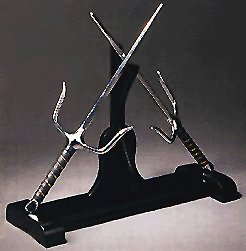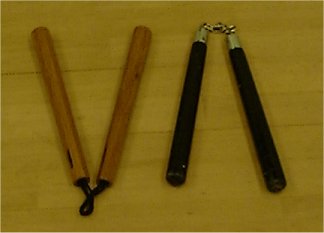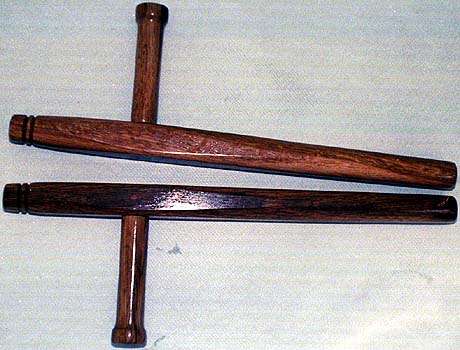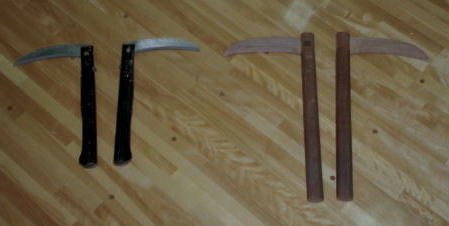
The Sai was originally used in the fields to plant the seeds. It would act like a tiller, where a farmer would walk a straight line dragging the sai throw the dirt to make a place for a person following him to place the seeds. The sai was also used for aeration of the fields. The sai is a very effective weapon against the sword, being one of very few items that the Okinawan people could have made of metal. Many people would actually care three sai with them. They would have two in their hands and a third one hidden in their obi. This third sai was usually the deciding factor is a fight, it would be used to throw at an opponent and then the practitioner still had two sai to defend himself with. The techniques of the sai are very close to those of empty hand forms. All but a few of these techniques are an exact complement to the empty hand form of the technique. Practice with the sai can create excellent wrist and grip strength. The sai originally came to a sharp point, which has been changed since the sai is no longer need for mortal combats anymore.


The origin of the Nunchuku is a debated issue. There are two come ideas behind where if came from. The first theory is that if was developed from an instrument that the Okinawan people used as a bit for horses. The second theory is that the Nunchuku was used to beat the rice patties. Either of these theories is a possible origin of the Nunchuku. The Nunchuku was originally bound together with braided horse hair, currently a rope or a chain is used to attack the two sticks together. The Nunchuku can be used by themselves or as a pair of two. They are lightening fast weapons that take many years to master. The Nunchuku can be used to block, strike, counter, pinch, and choke an opponent. The practice of Nunchuku is a great way for students to develop hand-eye coordination.
The Tonfa was originally used as a handle on a grinder. The end of the Tonfa would be used to grind rice, corn, grain, and any thing else. The Tonfa techniques are also very similar to the empty hand techniques of karate. The Tonfa was used to help protect the arm when blocking the attack of an opponent. It would then be used to manipulate an opponent and used to strike vital areas. Tonfa are a great way to develop the muscles in the forearm, wrist, and hand. The Tonfa has also been called "Tuifa" The Tonfa gained a lot of popularity with law enforcement which still uses them (night-stick) today.


The Kama, also known as a sickle, was used by the Okinawan farmers to chop down the sugar cane. It would also be used to cut foliage and such. The Kama is a very lethal weapon. It can be used to strike block, and cut an opponent when attacked. The Kama is the only "bladed" weapon that the Okinawans were able to use. The kama is a great way for students to develop a sense of what their body is doing and were a foreign body is at in relation to their body. A student must pay close attention to the kama, without concentrating on it, so that a movement can be perform without cutting oneself.
